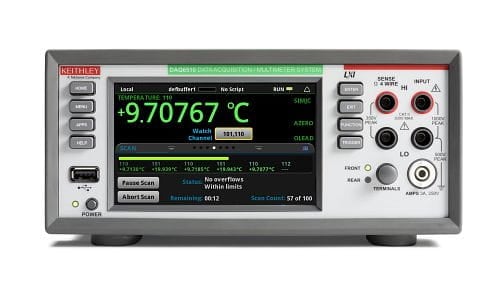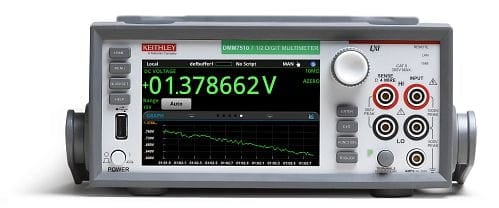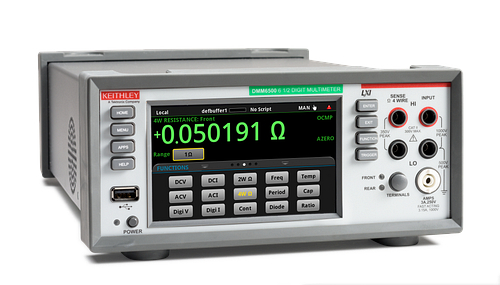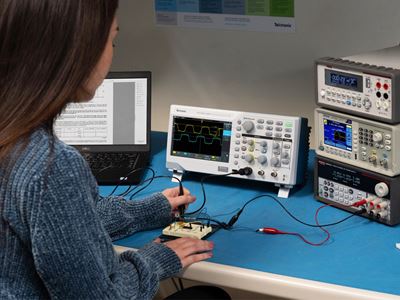

Data Acquisition (DAQ) is the measurement of electrical or physical things like voltage, current, temperature, pressure, sound, or motion. Converting these signals into digital data is necessary to analyze and store them for further processing. DAQ systems are essential for a wide range of applications, from scientific research and industrial automation to environmental monitoring and medical diagnostics.
Diverse Applications of Data Acquisition Across Fields
Data acquisition plays a pivotal role in a wide array of sectors, enabling the precise measurement and analysis of various physical and electrical phenomena:
- In Scientific Research: Essential for exploring physical phenomena such as temperature fluctuations, pressure variations, and motion, data acquisition technology also proves vital in medical studies for monitoring key health indicators like heart rate and blood pressure.
- Within Industrial Automation: Here, data acquisition is integral to controlling and monitoring manufacturing processes. It helps in assessing critical factors such as temperature and pressure in chemical plants and overseeing the functioning of robotic assembly lines, thereby streamlining industrial operations.
- For Environmental Monitoring: This technology is a key ally in environmental conservation efforts. It aids in tracking important environmental metrics including air quality, humidity, and temperature, and is instrumental in evaluating emissions from industrial plants and analyzing water quality in rivers and lakes.
- In Aerospace and Defense: Data acquisition is crucial in managing and monitoring complex systems in aerospace and defense applications. It assists in evaluating aircraft engine performance and in the real-time monitoring of various parameters such as temperature and pressure in defense equipment.
- Within Medical Diagnostics: In the healthcare sector, data acquisition technologies are employed for recording critical physiological data, such as ECG, EEG, and EMG readings. This is particularly crucial during surgical procedures and in diagnostic tests.
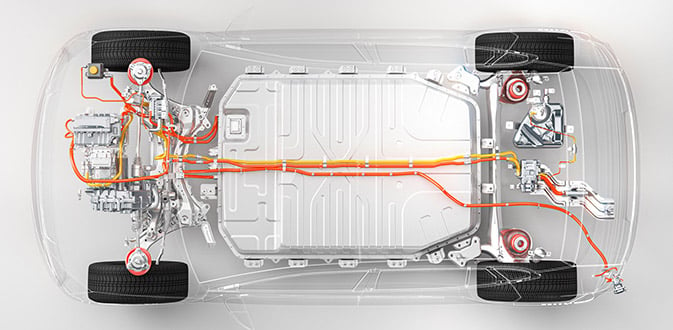
Overall, the utility of data acquisition extends across various industries, underscoring its importance in applications that require detailed, accurate, and dependable data collection and analysis. Whether it's advancing scientific research, optimizing industrial processes, protecting the environment, ensuring safety in automotive, aerospace and defense, or aiding medical diagnostics, data acquisition technologies are indispensable.
Understanding DAQ Systems
What is a DAQ system?
A DAQ (Data Acquisition) system is a set of components and devices used to measure and collect data from various sensors or transducers. It involves the conversion of physical or electrical signals into digital data for further analysis and processing.
A typical DAQ system consists of three main parts:
- Sensors or Transducers: These devices convert physical or electrical signals, such as temperature, pressure, or voltage, into measurable quantities.
- Signal Conditioning Circuits: These circuits amplify, filter, or digitize the signals from the sensors to improve their quality and accuracy.
- Data Acquisition Device: This device samples and digitizes the conditioned signals and sends them to a computer or other processing unit for analysis and storage. The data acquisition device can be a standalone unit or a plug-in card that connects to a computer's PCI or USB port.
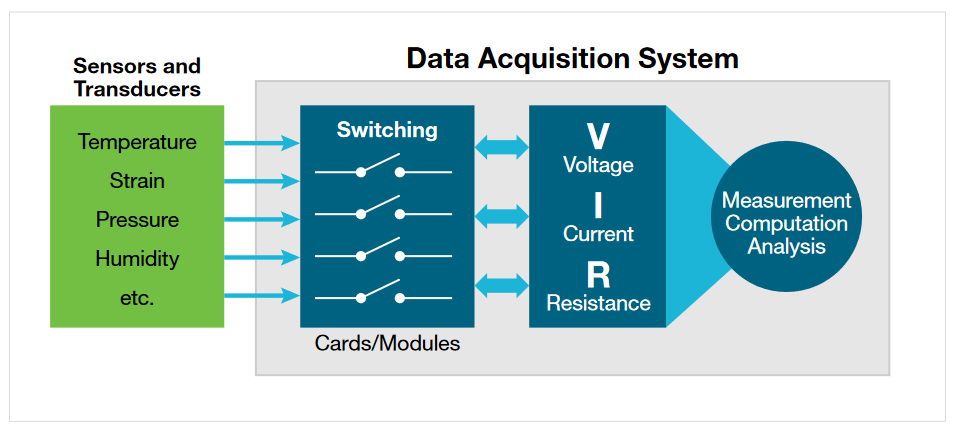
DAQ systems are used in a wide range of applications, including scientific research, industrial automation, environmental monitoring, aerospace and defense, and medical diagnostics. They play a crucial role in measuring, analyzing, and controlling physical or electrical phenomena, enabling researchers, engineers, and technicians to collect and analyze data accurately and efficiently.
How to Choose the Right Data Acquisition System
Selecting the right Data Acquisition (DAQ) system is crucial for obtaining precise and reliable measurements in various applications. The effectiveness of a DAQ system lies in its ability to accurately meet specific measurement requirements, which involves considering several key factors:
- Accuracy and Resolution: The core of DAQ system effectiveness is its accuracy, largely determined by the resolution of the analog-to-digital converter (ADC) and the stability of the reference voltage. Opt for systems with higher resolution ADCs and stable reference voltages for more precise measurements.
- Sampling Rate: Essential for applications involving rapidly changing signals, a higher sampling rate is crucial for high-speed data acquisition and dynamic control systems.
- Signal Conditioning: Look for robust signal conditioning capabilities, including amplifying, filtering, or digitizing signals from various sensors, to enhance their quality and accuracy. This is particularly important for adapting to different sensor types like thermocouples, strain gauges, and accelerometers.
- Software Compatibility and Functionality: Ensure the DAQ system comes with user-friendly software that offers effective data visualization tools and supports multiple programming languages. Compatibility with various operating systems like Windows, Linux, or Mac OS adds to the system’s versatility.
- Channel Count: Consider the number of channels the system can support. A higher channel count increases the system's flexibility and scalability in handling multiple signal types.
- Environmental Adaptability: Assess the system’s ability to operate under the specific environmental conditions of your application.
- Budget Constraints: Evaluate the overall cost, which includes the price of the system or device and any additional accessories or software required.
By carefully considering these aspects, you can choose a DAQ system that not only aligns with your specific needs but also ensures a balance between performance, versatility, and budget. This approach guarantees that the selected system can effectively and efficiently handle the required data acquisition tasks.
Why DAQ Systems Are Essential for Engineering Insights
Key Insights Gained from DAQ Systems
DAQ systems are instrumental in capturing and recording data from various sensors, crucial for monitoring physical or electrical phenomena. These systems empower engineers with data-driven insights, allowing them to make more informed decisions in areas such as:
- Trends and Patterns Analysis: Engineers use DAQ systems to identify trends in parameters like temperature or pressure, enabling early detection of potential issues.
- Fault Detection and Diagnosis: By analyzing data from DAQ systems, engineers can pinpoint faults in systems, identifying malfunctioning components or sensors.
- Performance Optimization: DAQ data aids in identifying inefficiencies, guiding engineers to optimize system performance and increase productivity.
- Predictive Maintenance: Analyzing data trends helps in predicting maintenance needs, preventing system breakdowns.
- Quality Control: In manufacturing, DAQ systems are pivotal in ensuring product quality, detecting any deviations from required specifications.
Key Technologies for High-Fidelity DAQ Measurements
Incorporating Advanced Calibration
Data Acquisition systems today benefit significantly from advanced self-calibration techniques, which employ third-order polynomials. This innovative approach greatly enhances the accuracy of measurements by auto-adjusting calibration coefficients based on predetermined input signals. Such accuracy is indispensable in sectors where precise data collection is critical, including aerospace, defense, and automotive applications.
Importance of Isolation in Measurement Accuracy
Isolation plays a pivotal role in ensuring the accuracy and reliability of DAQ systems. It involves shielding the measurement circuits from potential distortions like electrical noise and voltage discrepancies. Employing isolation techniques, such as galvanic and magnetic isolation, is crucial, especially in high-voltage environments or areas susceptible to electrical interference, to maintain the integrity of the data collected.
Advanced Isolation Techniques for Reliable Measurements
Maintaining the integrity of measurements is a fundamental aspect of data acquisition. DAQ systems often incorporate advanced isolation methods to protect sensitive measurement components from external electrical disturbances. By establishing either physical or electromagnetic barriers, these systems prevent noise or voltage fluctuations from impacting the accuracy of the data, a necessity in environments with high electromagnetic interference or unstable electrical conditions.
Leveraging Signal Streaming and Remote Monitoring
Signal streaming and remote monitoring are groundbreaking advancements in the realm of DAQ. High-speed signal streaming facilitates the real-time capture and analysis of data, essential in dynamic and demanding testing environments. Additionally, remote monitoring capabilities enable operators to manage and visualize data remotely, enhancing operational flexibility and efficiency, particularly in complex, continuously monitored systems.
High-Performance DAQ Systems and Devices from Keithley
Overview of Keithley's DAQ Capabilities
Keithley Instruments provides a range of advanced data acquisition systems, known for their accurate measurement capabilities, fast scanning, and versatile setup options. These systems are designed to cater to various measurement and analysis needs in fields like scientific research, industrial automation, and more.
Keithley DAQ6510: Feature-Rich Data Acquisition System
The Keithley DAQ6510 defines versatility in data acquisition, consolidating a suite of essential functions into a singular, robust unit. This system is engineered to cater to a range of measurement needs with standout features that include:
- Precision Multimeter: For accurate measurement of electrical parameters.
- Rapid Scanning Capability: Ensures quick data collection.
- Digitization Functionality: Converts analog signals into digital format.
- Integrated Data Logger: For efficient recording and storage of data.
- Extensive Measurement Range: Capable of measuring voltage, current, resistance, capacitance, temperature, and frequency.
- High Channel Support: Accommodates up to 80 channels, making it ideal for large-scale data acquisition.
- Fast Scan Rate: Achieves a scan rate of 1 MS/s, streamlining the data collection process.
Designed for scenarios requiring comprehensive and varied data collection, the Keithley DAQ6510 excels in providing enhanced connectivity and seamless integration with diverse systems. Its ability to handle multiple channels and maintain a rapid scanning rate positions it as a prime choice for extensive data acquisition tasks.
Keithley DMM7510: Digital Multimeter with Real-Time Sampling
The Keithley DMM7510 combines the functionality of a precise digital multimeter with a real-time sampling oscilloscope. Key features include:
- User-friendly interface
- Capability to measure voltage, current, resistance, capacitance, and temperature
- Equipped with 20 channels
- A sampling rate of 1 MS/s This device is ideal for applications requiring detailed and rapid measurement across various parameters
Keithley DMM6500: Versatile Bench/System Digital Multimeter
The DMM6500 61⁄2-Digit Bench/System Digital Multimeter is another key offering from Keithley. This multimeter is particularly useful for applications that demand high-speed measurements and multiple parameter tracking. It is notable for its flexibility, functioning both as a standalone instrument and as part of a larger DAQ system. Its capabilities include:
- Measuring voltage, current, resistance, among others
- Up to 10 channels
- A high sampling rate of 10 MS/s
Each of these systems from Keithley Instruments brings unique strengths to the table, enabling efficient and accurate data acquisition for a variety of applications.
Why Choose Keithley DAQ Systems?
High Accuracy: Keithley Instruments' DAQ systems are designed with high-precision components, including high-resolution ADCs, stable reference voltages, and high-quality signal conditioning circuits, to ensure accurate measurements.
High-Speed Scanning: Keithley Instruments' DAQ systems are capable of high-speed scanning, allowing for fast data acquisition and analysis. This makes them ideal for applications that require real-time monitoring and control.
Flexible Configuration: Keithley Instruments' DAQ systems are designed to be flexible and configurable, allowing users to customize the system to meet their specific measurement requirements. This includes the ability to support multiple sensor types, input/output configurations, and signal conditioning options.
User-Friendly Software: Keithley Instruments' DAQ systems come with user-friendly software that provides data visualization tools and supports multiple programming languages. This makes it easy for users to control and analyze the data from the system.
Industry-Leading Support: Keithley Instruments is known for its industry-leading support, including comprehensive documentation, technical support, and training programs. This ensures that users can get the most out of their DAQ systems and achieve optimal performance.
Overall, Keithley Instruments' DAQ systems are leading the way in terms of accuracy, speed, flexibility, and user-friendliness. Keithley Instruments' DAQ systems are great for many uses, like research, automation, and data collection in different industries. They have powerful parts, can be set up in different ways, and have easy-to-use software. to data acquisition and analysis. to aerospace and defense.
Power Your Innovations with the Right DAQ Solution
In the diverse landscape of modern technology, Data Acquisition (DAQ) stands as an indispensable tool across various sectors. From enabling precise measurements in scientific research to optimizing industrial processes, ensuring environmental integrity, and advancing medical diagnostics, DAQ systems have become crucial. Their advanced calibration, robust isolation, and innovative features like signal streaming and remote monitoring exemplify their versatility and adaptability. As the demand for accurate and reliable data collection grows, the importance of DAQ systems in facilitating informed decision-making and driving technological advancement becomes increasingly evident.
Ready to capture critical data with the accuracy and speed your project demands? Explore our range of Keithley data acquisition systems, designed to provide reliable, high-fidelity measurements for any application.
Unsure which DAQ system is the right fit for your unique measurement challenge? Our application experts are ready to help you configure the perfect solution with confidence.



